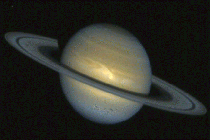 |
This is a picture of a storm on Saturn taken on
December 1, 1994 by the Hubble Space Telescope. (Photo release #STScl-PRC94-53 from the Space Telescope Science Institute) |
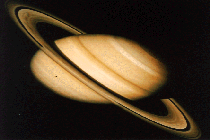 |
This is a true color picture assembled from Voyager 2 Saturn images obtained on August 4. The three moons in the picture are Tethys, Dione, and Rhea. (NASA/JPL Press Release # P23887) |
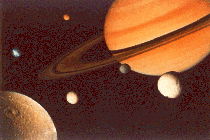 |
This is a montage prepared from images taken by Voyager 1 during its flight in November, 1980. (NASA/JPL Press Release #P23400) |
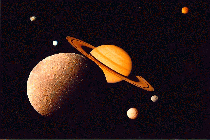 |
This image is a montage of Saturn with 6 of its moons: Dione, Tethys, Mimas, Enceladus, Rhea, and Titan. (NASA Photo #'s P-23209C, 80-HC-647) |
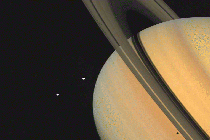 |
This is a picture of Saturn with 2 of its moons: Tethys and Dione, photographed on Nov. 3, 1980 by Voyager 1. This picture clearly shows the Cassini division which separates rings A and B. (Courtesy NASA/JPL). |
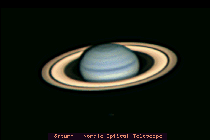 |
This is an picture of Saturn taken by the Nordic Optical Telescope located at La Palma, Canary Islands.
(© Copyright Nordic Optical Telescope Scientific Association) |
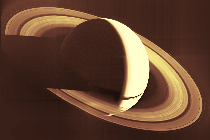 |
This picture is a view of Saturn from Voyager 1 two days after its encounter. This view can never be seen from an earth-bound telescope. (© Copyright Calvin J. Hamilton) |
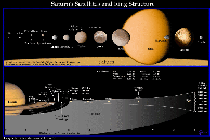 |
This is an image of Saturn's satellites and ring structure approximately to scale. (Courtesy Dave Seal, JPL) |
 |
This is a false color image of Saturn's rings. (NASA Press Release #P-23953C) |
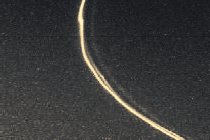 |
This is an image of the F-ring, Saturn's most complex ring, made of 2 narrow rings along which "knots" can be seen and give the illusion of a "braid". (Courtesy NASA/JPL) |
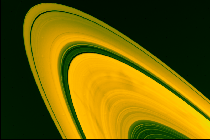 |
This is a color-enhanced image of Saturn's rings. It clearly shows the Encke division, which divides the A ring into two sections, and the Cassini division, which separates the A ring from the B ring. (Credit: Calvin J. Hamilton) |


 Main
Main
 References
References